 |
Flying Bald Eagle Photo by stacyvitallo at
https://pixabay.com/photos/eagle-eagle-flying-soar-bird-1029908/ |
This world history resource focuses on the Enlightenment
and Revolution from 1550 to 1789 and includes quiz questions
and answers and video links to related topics.
I utilized World History: Patterns of Interaction (Holt McDougal)
for our world history textbook. It has multiple options for
different learning styles and covers a wide array of information.
This quiz accompanies Chapter 22: pages 620-647.
Directions for the quiz:
- Scroll down and click on the thumbnail to enlarge to full screen.
- Click on the graphic to advance to the next screen.
- Choose an answer for each question.
- Compare your answers with those provided.
If you are interested in a group and/or interactive version of this quiz,
log in to Kahoot! and search for Week 22 World History by Katrena.
Below are free videos to accompany chapter 22:
Thanks for visiting my Student Survive 2 Thrive blog.
Navigate my blog easily through my site map, topics
tabs on the right, or via my search bar.
Here are a few of my articles you may also find helpful this week:
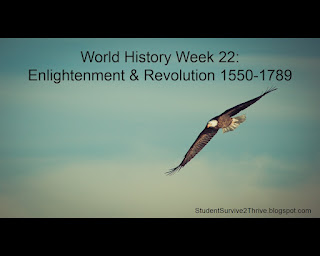 |
| World History Week 22: Enlightenment & Revolution 1550-1789 |
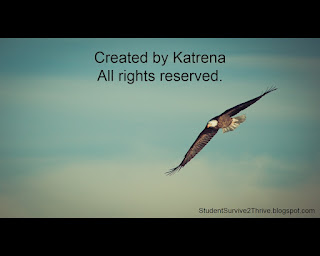 |
| Created by Katrena. All rights reserved. |
 |
Starting in the mid-1500s, a new way of thinking called the ____ emerged.
It was based on careful observation & a willingness to question accepted beliefs.
Answer choices include: Geocentric Theory, Pythagorean Theorem,
Scientific Revolution, Bill of Rights |
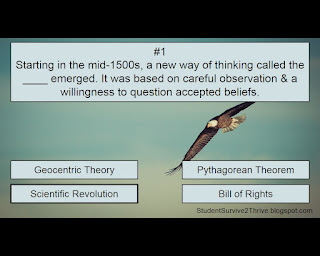 |
| The correct answer is Scientific Revolution. |
 |
Nicholaus Copernicus disputed geocentric theory & began
considering the idea that the planets revolved around the sun, or ___.
Answer choices include: Heliocentric Theory, Scientific Method,
Centrifugal Force, Neoclassical Revolution |
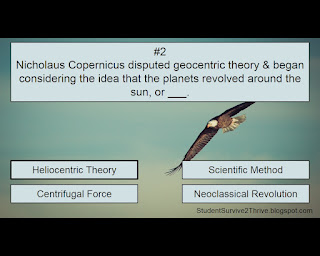 |
| The correct answer is Heliocentric Theory. |
 |
Who developed several laws of motion & was forced to say that
Copernicus was wrong when he knew that Copernicus was correct?
Answer choices include: Johannes Kepler, Tyco Brahe, Ptolemy, Galileo Galilei |
 |
| The correct answer is Galileo Galilei. |
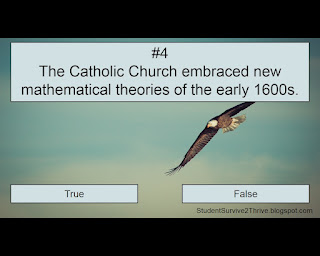 |
The Catholic Church embraced new mathematical theories of the early 1600s.
Answer choices include: true, false |
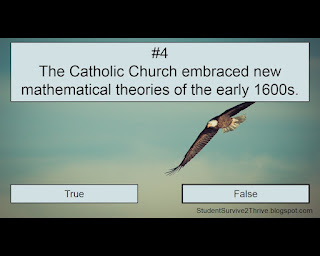 |
| The correct answer is false. |
 |
According to Gabriel Fahrenheit’s thermometer,
water freezes at ___ degrees Fahrenheit.
Answer choices include: 0, 32, 100, 212 |
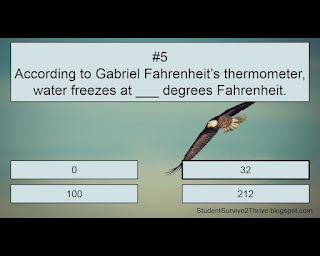 |
| The correct answer is 32. |
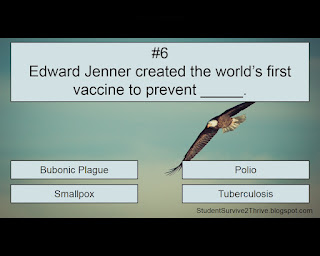 |
Edward Jenner created the world’s first vaccine to prevent _____.
Answer choices include: Bubonic Plague, Polio, Smallpox, Tuberculosis |
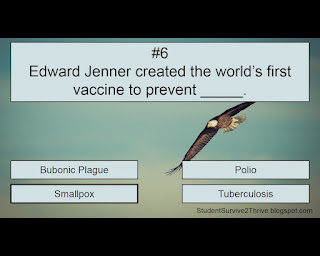 |
| The correct answer is smallpox. |
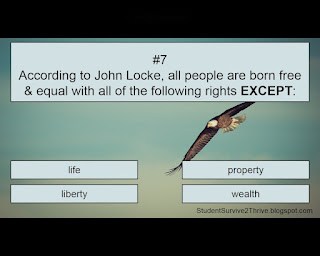 |
According to John Locke, all people are born
free & equal with all of the following rights EXCEPT:
Answer choices include: life, property, liberty, wealth |
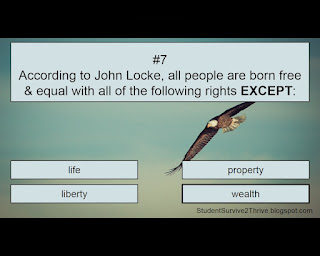 |
| The correct answer is wealth. |
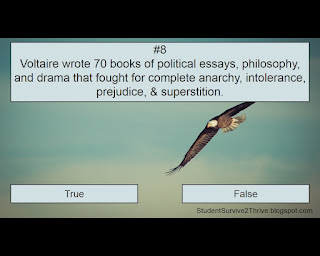 |
Voltaire wrote 70 books of political essays, philosophy,
and drama that fought for complete anarchy,
intolerance, prejudice, & superstition.
Answer choices include: true, false |
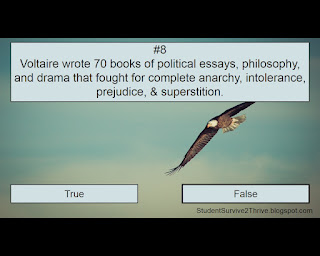 |
| The correct answer is false. |
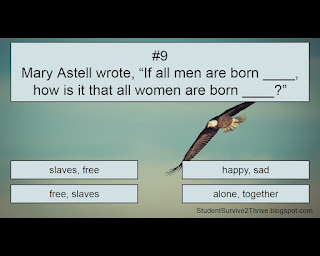 |
Mary Astell wrote, “If all men are born ____,
how is it that all women are born ____?”
Answer choices include: slaves/free, happy/sad,
free/slaves, alone/together |
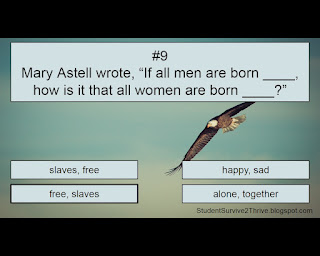 |
| The correct answer is free/slaves. |
 |
In the 1700s, scientists made new key discoveries in ____.
Answer choices include: physics, chemistry, biology, all of these |
 |
| The correct answer is all of these. |
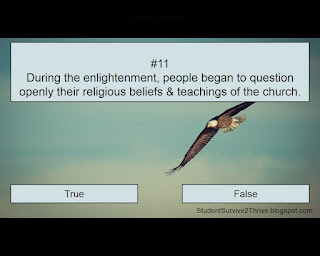 |
During the enlightenment, people began to question openly
their religious beliefs & teachings of the church.
Answer choices include: true, false |
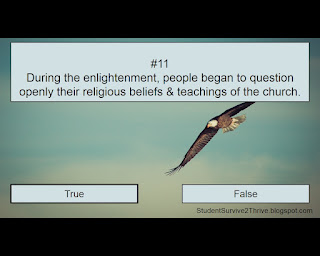 |
| The correct answer is true. |
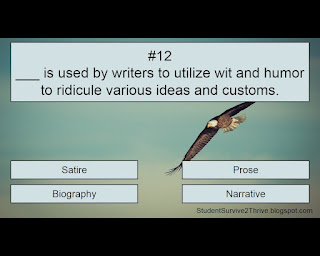 |
___ is used by writers to utilize wit and humor
to ridicule various ideas and customs.
Answer choices include: Satire, Prose, Biography, Narrative |
 |
| The correct answer is Satire. |
 |
In the 1700s, ___ was the cultural and intellectual capital of Europe.
Answer choices include: New York, Berlin, Madrid, Paris |
 |
| The correct answer is Paris. |
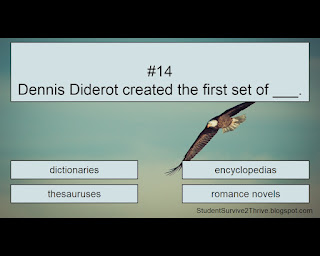 |
Dennis Diderot created the first set of ___.
Answer choices include: dictionaries, encyclopedias,
thesauruses, romance novels |
 |
| The correct answer is encyclopedias. |
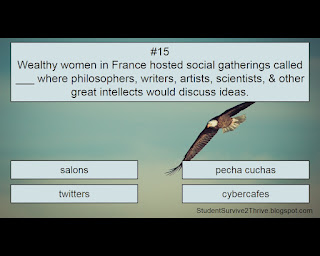 |
Wealthy women in France hosted social gatherings called ___
where philosophers, writers, artists, scientists,
& other great intellects would discuss ideas.
Answer choices include: salons, pecha cuchas, twitters, cybercafes |
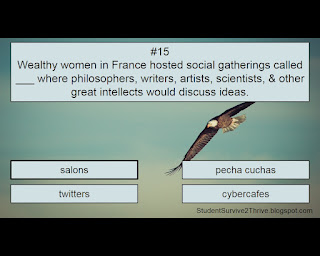 |
| The correct answer is salons. |
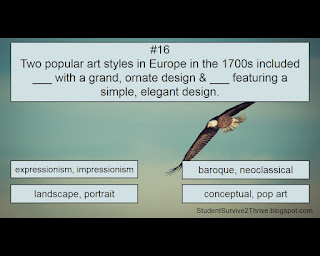 |
Two popular art styles in Europe in the 1700s included ___
with a grand, ornate design & ___ featuring a simple, elegant design.
Answer choices include: expressionism/impressionism,
baroque/neoclassical, landscape/portrait, conceptual/pop art |
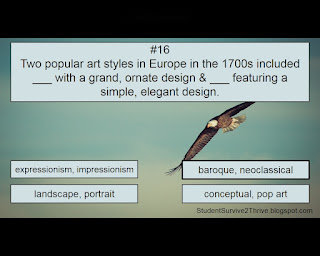 |
| The correct answer is baroque/neoclassical. |
 |
Which of the following musicians was NOT trained in classical style?
Answer choices include: Wolfgang Amadeus Mozart,
Franz Joseph Haydn, Ludwig van Beethovan, Johann Sebastian Bach |
 |
| The correct answer is Johann Sebastian Bach. |
 |
Which of the following was NOT an enlightened despot
in Europe during the Enlightenment?
Answer choices include: Catherine the Great of Russia,
Frederick II of Prussia, Adolph Hitler of Germany, Joseph II of Austria |
 |
| The correct answer is Adolph Hitler of Germany. |
 |
In 1773, colonists protested an import tax
via a demonstration called the ___.
Answer choices include: Georgia Boycott,
Boston Tea Party, Massachusetts Witch Trials, Roanoke Tax Refusal |
 |
| The correct answer is Boston Tea Party. |
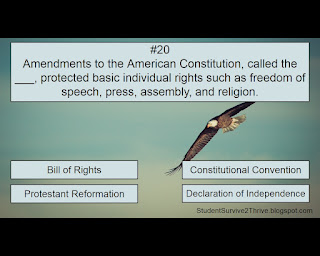 |
Amendments to the American Constitution, called the ___,
protected basic individual rights such as
freedom of speech, press, assembly, and religion.
Answer choices include: Bill of Rights, Constitutional Convention,
Protestant Reformation, Declaration of Independence |
 |
| The correct answer is Bill of Rights. |
 |
| Find more resources at StudentSurvive2Thrive.blogspot.com |












































No comments:
Post a Comment
Thanks for reading my article and sending your comment! Please note that I do not place links to other web sites on this blog.
Note: Only a member of this blog may post a comment.